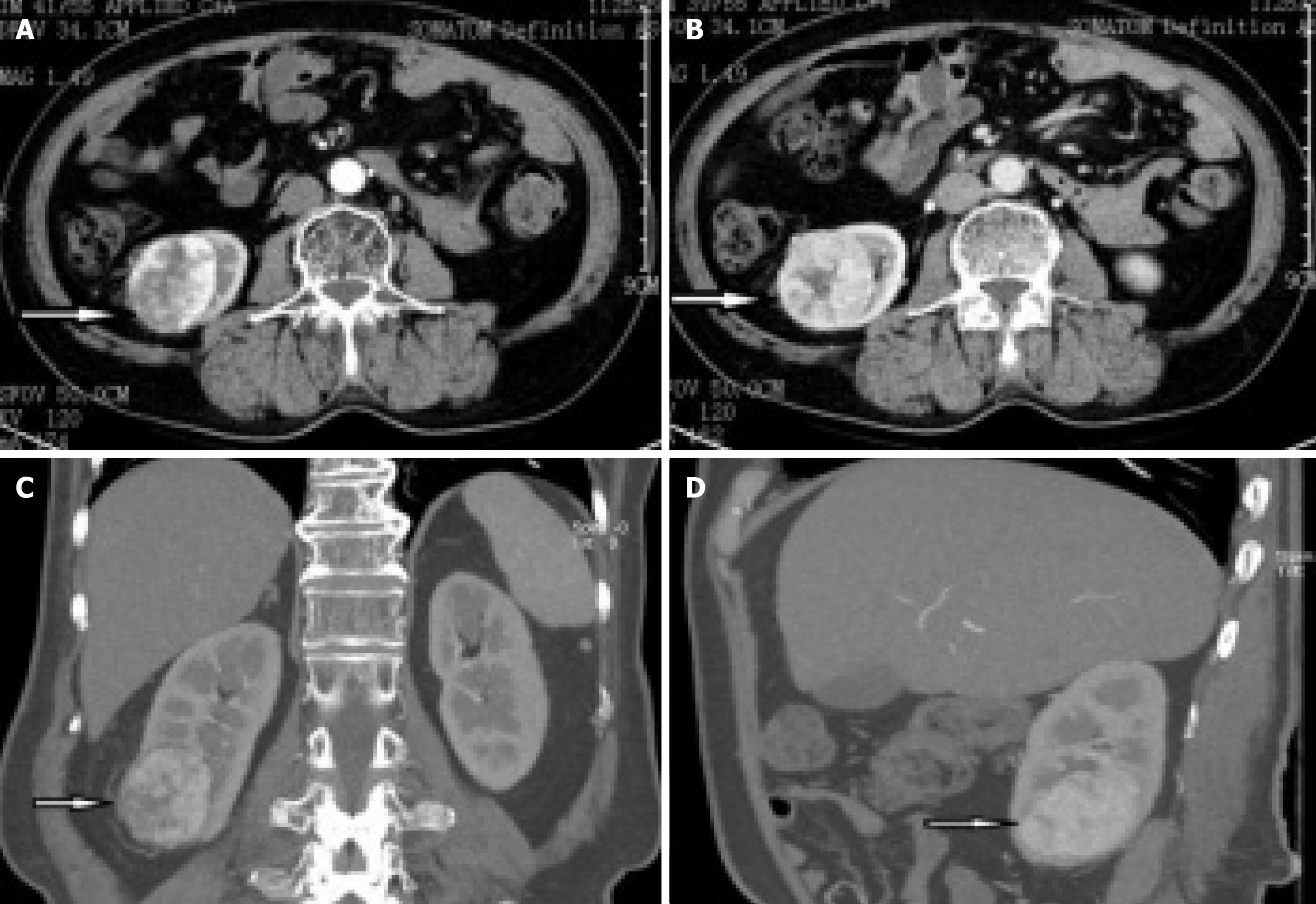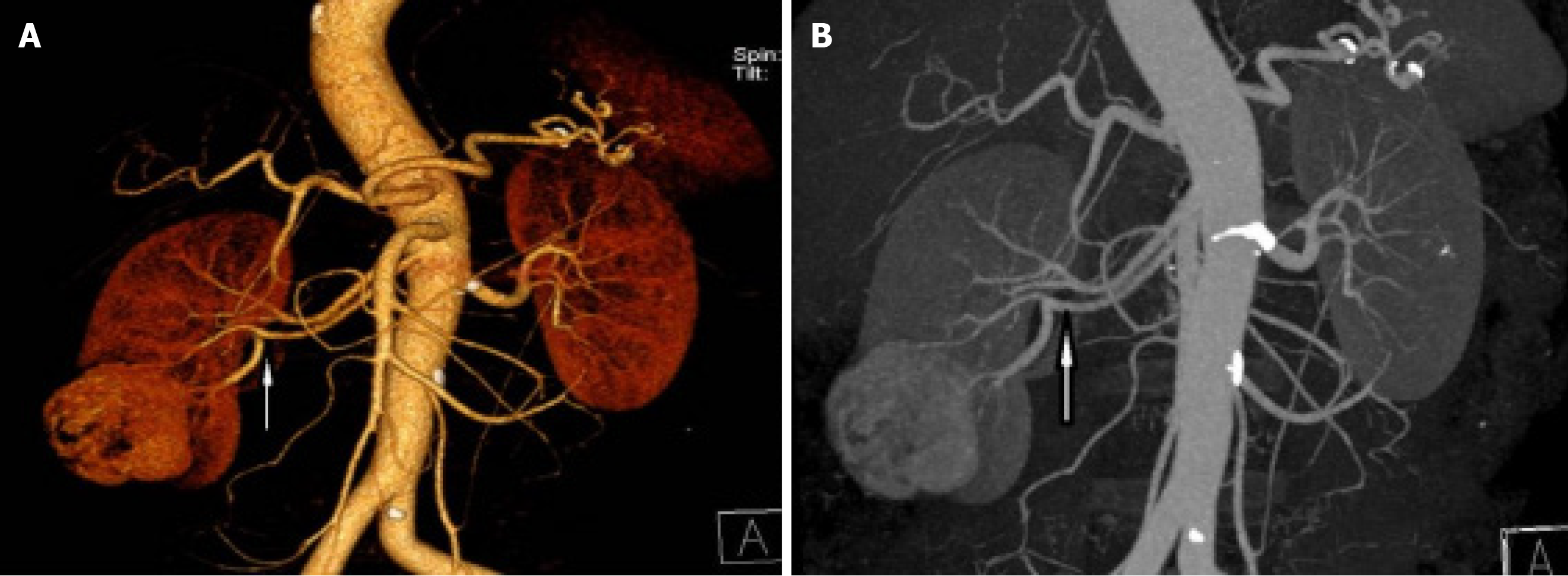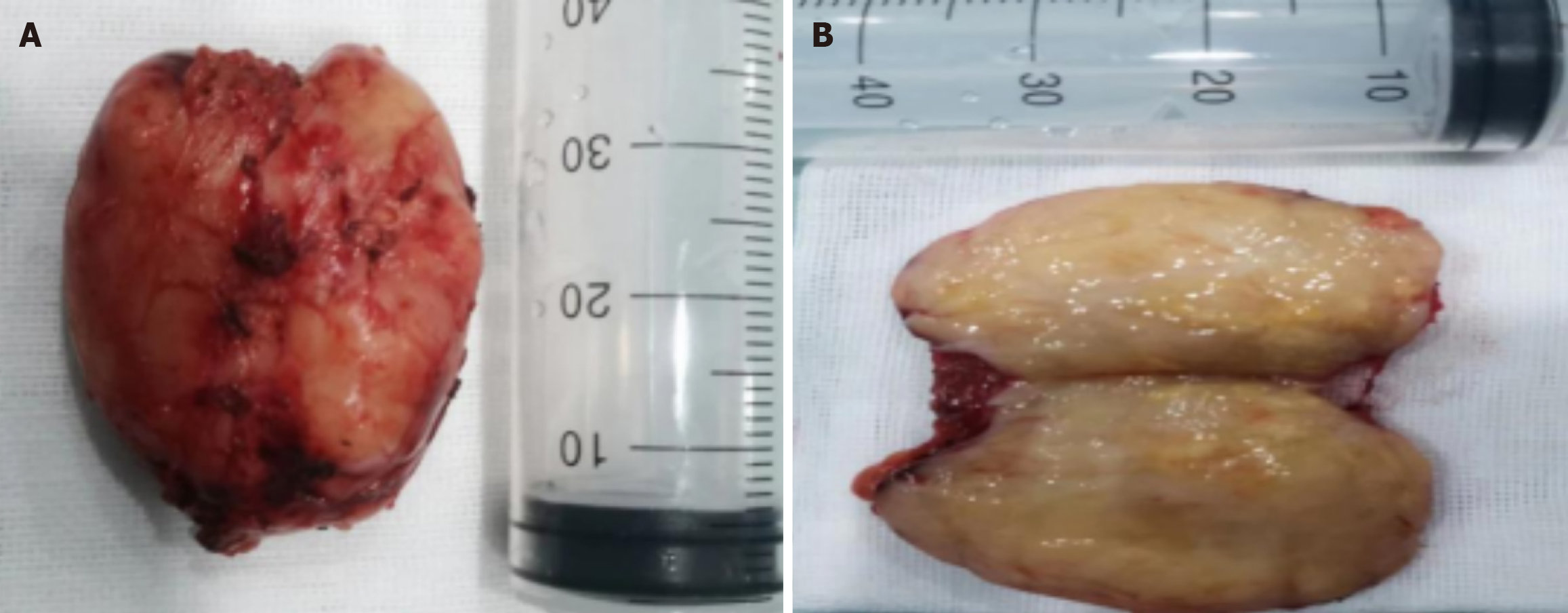Copyright
©The Author(s) 2024.
World J Clin Oncol. Nov 24, 2024; 15(11): 1435-1443
Published online Nov 24, 2024. doi: 10.5306/wjco.v15.i11.1435
Published online Nov 24, 2024. doi: 10.5306/wjco.v15.i11.1435
Figure 1 Abdominal contrast-enhanced computed tomography scans revealed that a heterogeneous mass was seen in the lower pole of the right kidney, with the size of about 53 mm × 47 mm.
A: Arterial phase; B: Venous phase; C: Coronal section; D: Median sagittal section.
Figure 2 A mass showing ectopic renal artery blood supply on contrast-enhanced computed tomography.
A and B: The ectopic artery flows from the abdominal aorta below the renal artery, supplying blood to the middle and lower pole part of the right kidney and the tumor.
Figure 3 The fluorescence mode clearly indicates that the ectopic artery provided blood to the middle and lower half of the right kidney.
A: Artery showing an ectopic right kidney in the white-light mode; B: Artery showing an ectopic right kidney in the fluorescent mode.
Figure 4 In the fluorescence mode, the renal tumor had almost the same color as the surrounding normal tissue, and the border is hard to recognize.
A: In the white-light mode; B: In the green-light mode; C: In the color light mode; D: In the black and white light mode.
Figure 5 Tumor images.
A and B: Picture of the right kidney tumor specimen, the tumor was successfully removed and the margin was intact.
Figure 6 Histopathological image.
A: Histopathological image showing tumor cells composed of spindle or fatty spindle cells with moderate cell density and a strip-like arrangement (H&E staining); B: Histopathological image showing significant thick-walled vessels with vitreous changes, and tumor cells seemed to distribute around the vessels; C: Immunohistochemical images showing positivity for HMB45; D: Immunohistochemical images showing S-100 positivity were suggestive of mature adipocytes.
- Citation: Tang JE, Wang RJ, Fang ZH, Zhu PY, Yao JX, Yang H. Treatment of fat-poor renal angiomyolipoma with ectopic blood supply by fluorescent laparoscopy: A case report and review of literature. World J Clin Oncol 2024; 15(11): 1435-1443
- URL: https://www.wjgnet.com/2218-4333/full/v15/i11/1435.htm
- DOI: https://dx.doi.org/10.5306/wjco.v15.i11.1435


















